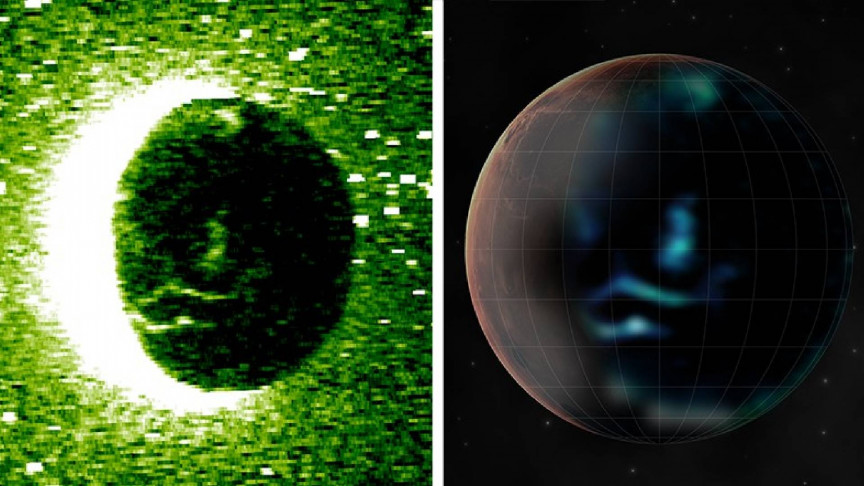
interestingengineering.com
A Pleasant Surprise: UAE Probe Spots Rare Martian Aurora
The beautiful auroras were captured by Hope's onboard spectrometer.
Science & Tech
The Hope probe sent by the United Arab Emirates to study the Martian atmosphere has released images of the nightside auroras on Mars, Space.com reported. This is a rarely seen event and a quite beautiful one at that.
“They’re not easy to catch, and so that’s why seeing them basically right away with (Emirates Mars Mission) was kind of exciting and unexpected,” Justin Deighan, a planetary scientist at the University of Colorado and deputy science lead of the mission, told Space.com.
“It’s definitely something that was on our radar, so to speak, but just looking at our first set of nighttime data and saying, ‘Hey, wait a second — is that? — it can’t be — it is!’ — that was a lot of fun,” Deighan added.
Two studies were released about the auroras revealing that they are proton auroras once believed to be only present on Earth.
"Proton aurorae are a distinct class of auroral phenomena caused by energetic protons precipitating into a planetary atmosphere. The defining observational signature is atomic hydrogen emissions from the precipitating particles after they obtain an electron from the neutral atmospheric gas, a process known as charge exchange," write the researchers in their study.
"Until now, proton aurorae have been observed at Earth only. Here, we present evidence of auroral activity driven by precipitating protons at Mars, using observations by the MAVEN spacecraft."
All over the planet
Auroras on Earth are restricted to the north and south poles but on Mars they occur all over the planet. Still, catching the auroras in all their splendor came as a surprise to the Hope mission.
“We did anticipate that the instrument would have the potential to do this,” Hessa Al Matroushi, the mission’s science lead, told Space.com. “It wasn’t designed to do it. But because we do have a mission that is targeting global coverage and we’re looking at Mars from different sides and very frequently within the atmosphere, that enabled us to have such a measurement of discrete auroras, which is very exciting.”
























































